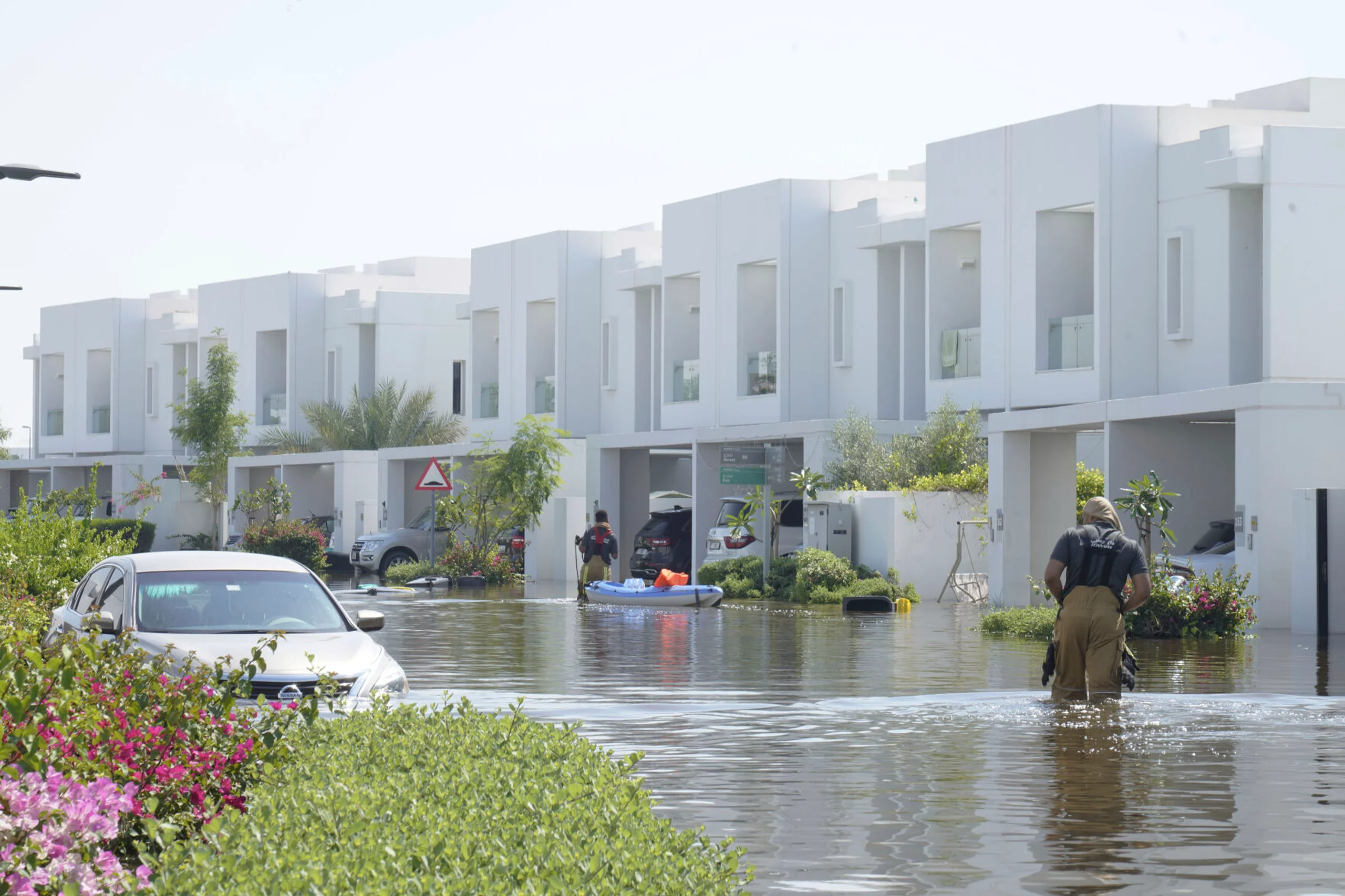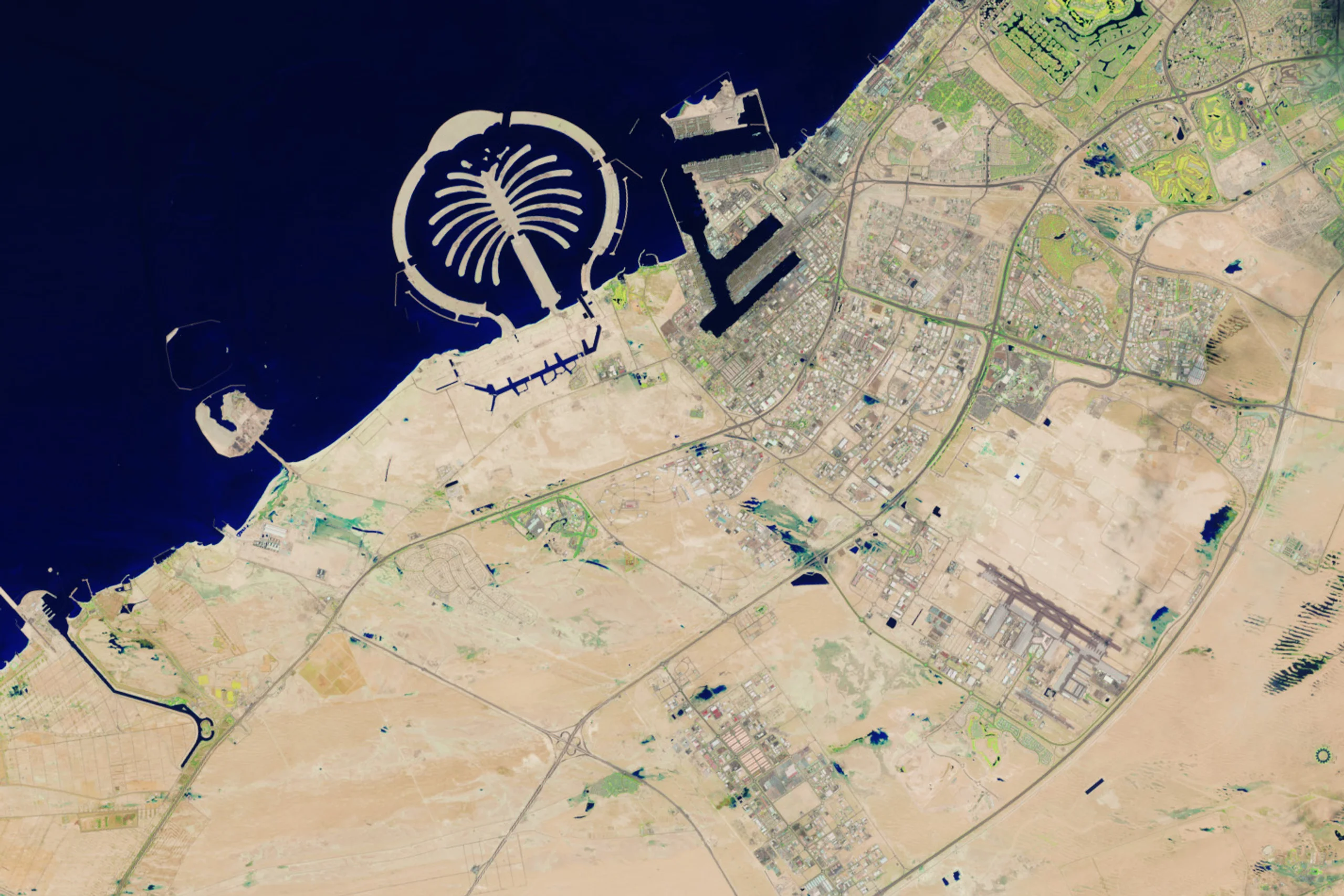On 16th April, the strongest rain in 75 years hit the United Arab Emirates. For more than 24 hours, heavy thunderstorms swept over the region, even reaching Oman and causing dramatic damage.
It is time to do the aftermath and infer lessons for real estate investors in Dubai.
How to buy flood-proof property
Apartments
Units near the ground floor or ceiling have suffered the most from the rainfall. Even lavish penthouse suites in the luxury segment faced significantly more damage than cheaper units. The least affected apartments were on the middle floors of any tower. That's where you want to look when you go shopping.

Ducting crashed on a car during the flood in a JBR parking, Dubai
A bonus is if the parking is above ground level. If you drive an expensive car, it's probably mandatory from now on. And try to get a spot not immediately below the podium, as there is also a chance the water will find its way through.
Villas / Townhouses
Dubai is mostly flat, but there are some hills and valleys, and smart investors should look for at least slightly elevated properties. We visited a few villa projects after the rain, and while some were entirely submerged, others were completely fine, located on inclines, while everything around them was drowning in chaos.
Location
Images taken by NASA
Generally, the areas near the beach suffered the least because the water surplus could dissolve quickly into the sea. We also asked our friends in Dubai how severely their areas were impacted. According to them, apart from building-constrained electricity outages, the least affected areas were:
- Dubai Marina
- Palm Jumeirah
- Jumeirah Lake Towers
- Port Rashid / Maritime City
- City Walk (overall fine)
- Damac Hills 1
If you are looking for property, you may want to pay extra attention to these districts.
Developers
It is crucial to select a capable and diligent developer. Following the directive from the Crown Prince, Sheikh Hamdan bin Mohammed Al Maktoum, residential management companies and real estate developers are now obligated to provide comprehensive support to flood-affected residents.
In particular, he ordered them to furnish alternative accommodations to residents displaced by the flood, manage necessary food distribution, and coordinate pest control and enhanced security services.
Additionally, as residents returned to their homes, these companies have been tasked with assisting in cleaning interiors, documenting damages for insurance claims, and evaluating future property risks. These obligations have to be provided for free.
BUT. Some developers have stepped up beyond what the government obliged them to provide. As such, Emaar and MAG stand out for their commitment to repair properties damaged by the flood, at no cost for the owners.
Political / infrastructure development
Barely two days after the rain had begun Sheikh Hamdan approved the development of an 80 billion AED (almost 22 billion USD) sewerage system to reduce the damage in future storms.
Side note: This is a prime example of a benevolent monarchy operating effectively and efficiently as opposed to a democratically run country, where you would expect such a decision to take two months (but probably even longer) instead of two days.
Cloud-seeding

The personnel of Project Stormfury of the U.S. National Oceanic and Atmospheric Administration in front of one of their Douglas DC-6 in 1966.
The government openly flies cloudseeding missions, and many people worldwide wonder if this rainfall was human-made, too. The UAE denies it, and honestly, it wouldn't make sense to us, either. I am not a weather expert, but there are a few simple arguments that seem simple and reasonable enough:
First, the storm's area was too big to be cloud-seeded, reaching even Oman.
Second, cloud seeding has existed as a technology for many decades. Throughout its application in various countries, experts deduced that it is not powerful enough to create a "severe storm."
Third, it's just not plausible. The UAE has no incentive to intentionally cause such damage to itself.
On the upside, cloud seeding has undoubtedly been an important factor in creating more greenery in the city, which is beneficial for residents and, by extension, investors.
Conclusion
Investors, like tourists, feel uneasy about the flood and its potential consequences. Despite the harsh environmental conditions, such as the harsh, scorching sun and extreme humidity, that the UAE has always had to face, they have overcome most of them and built a miraculous oasis in the desert. Incidents like the flood only pave the way for future improvements, like a sewerage system and revised building requirements.
The storms also represent a stress test for the residents and government. While the incident surely caused major chaos, it seems like people made the best of it: They showed a good sense of humor, helped each other in precarious situations, and took it as a lesson.
Real estate investors also have an opportunity to learn. Key takeaways include the importance of selecting properties in geographically advantageous locations, such as higher ground or mid-level apartments in high-rises, to minimize flood risks. Prioritize developments with robust flood management systems and consider developers' track records in managing crises.




